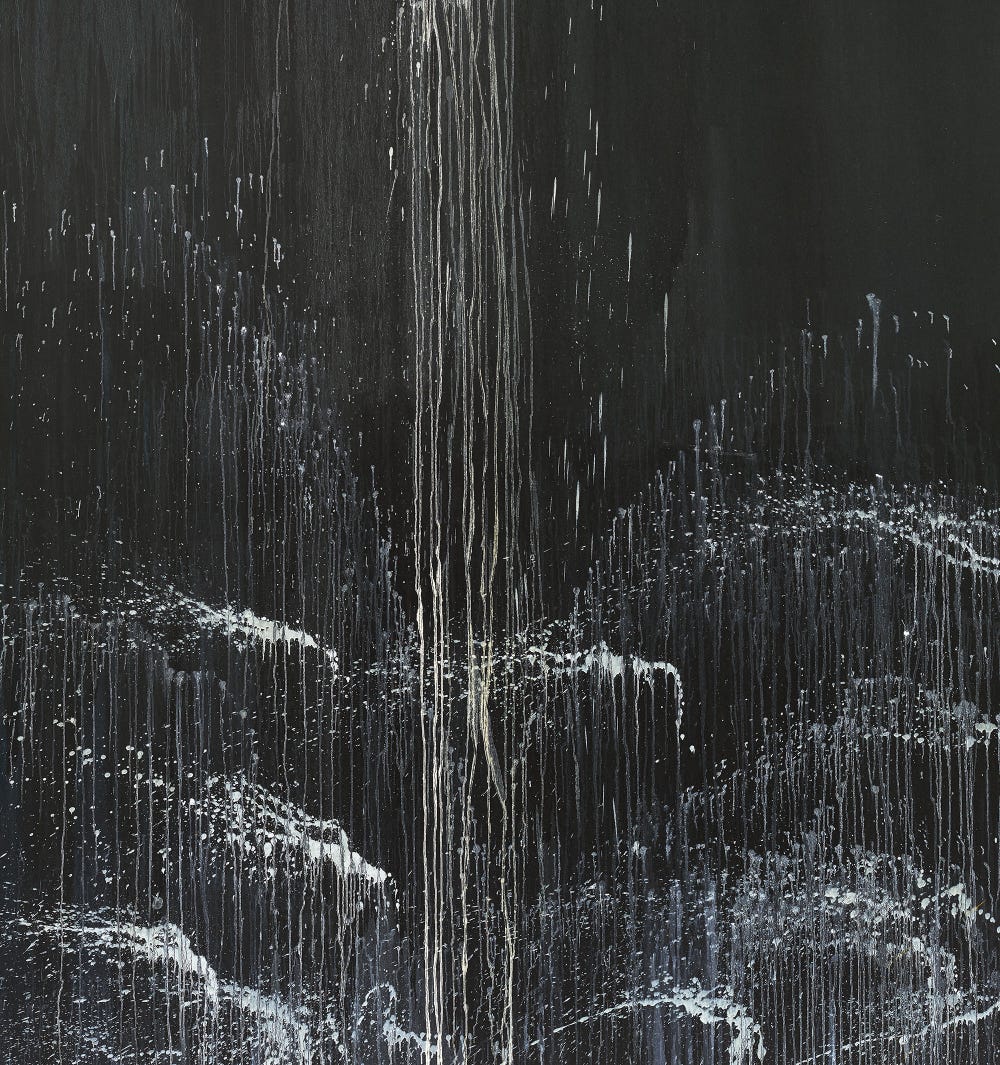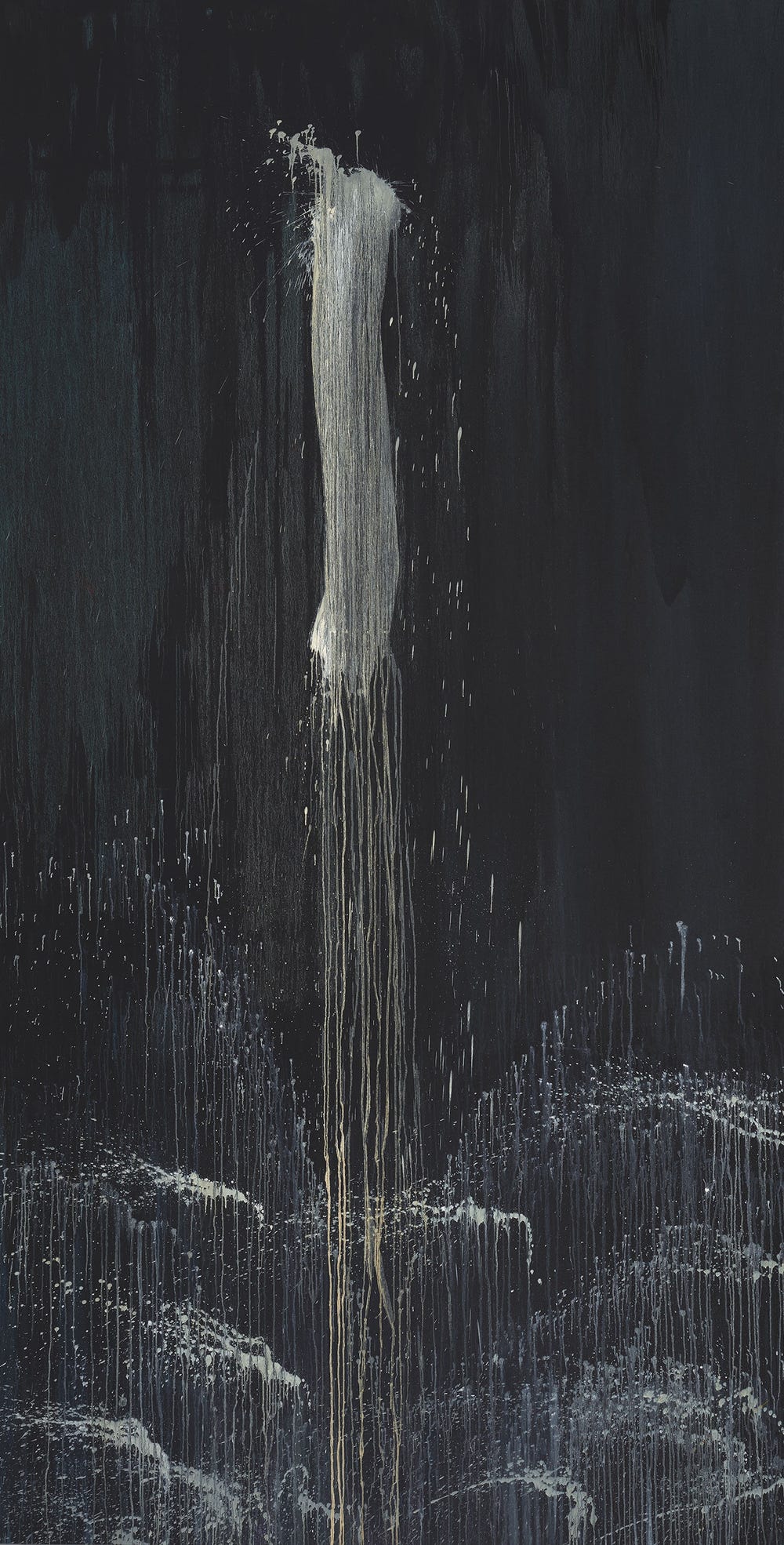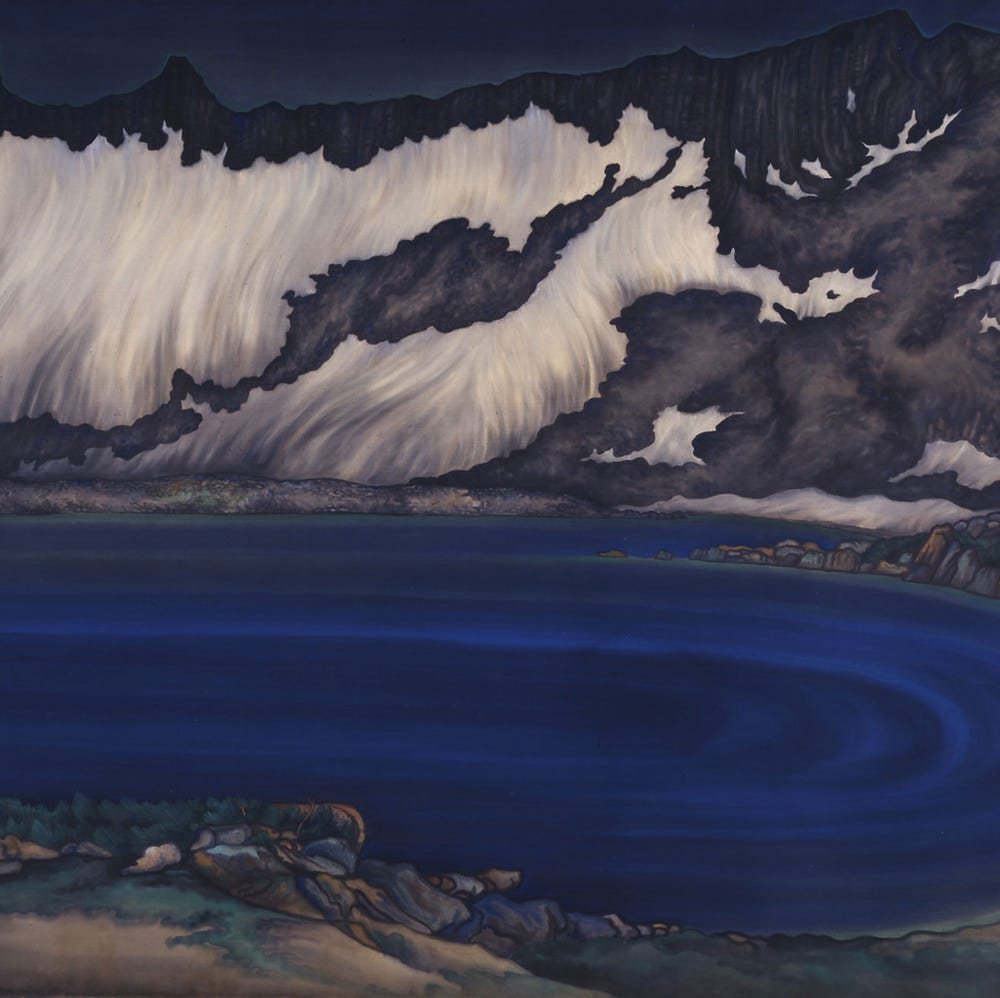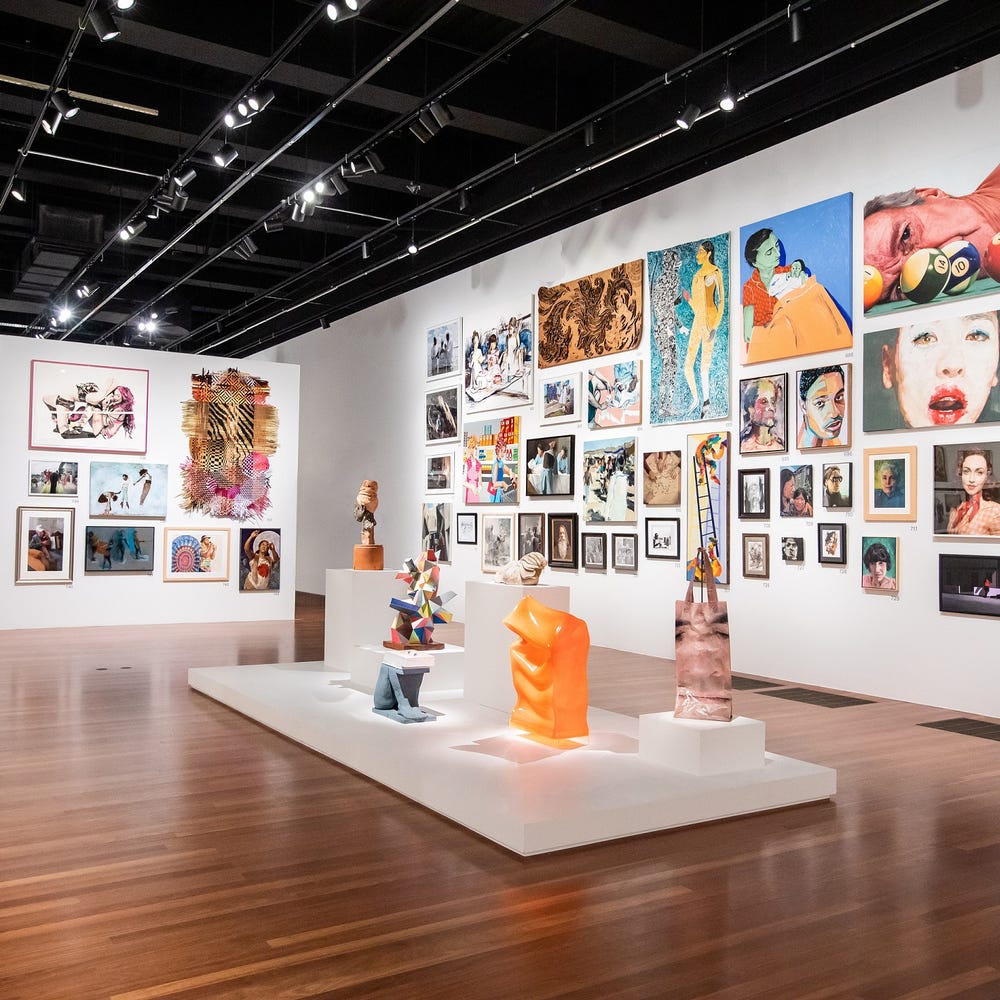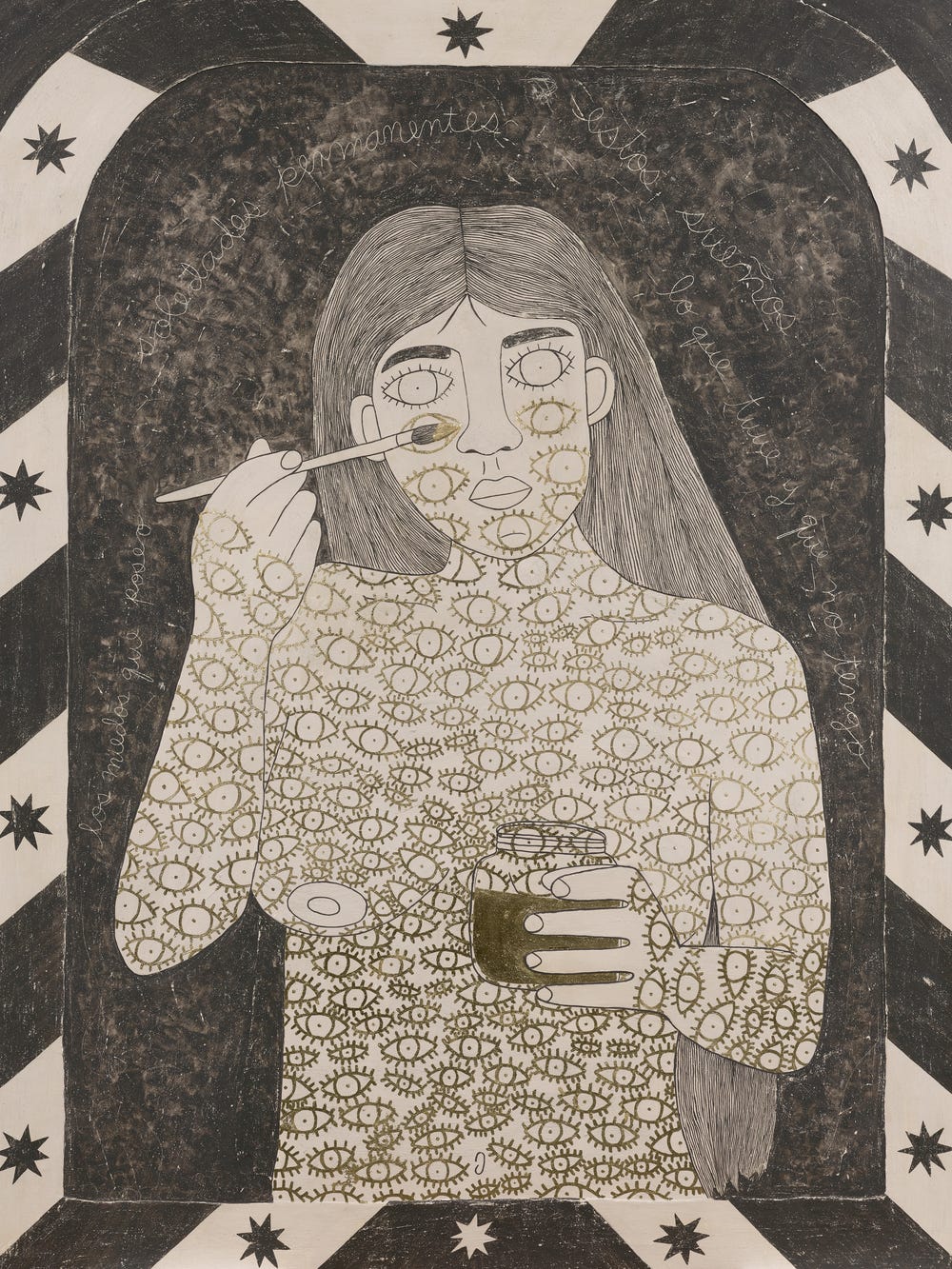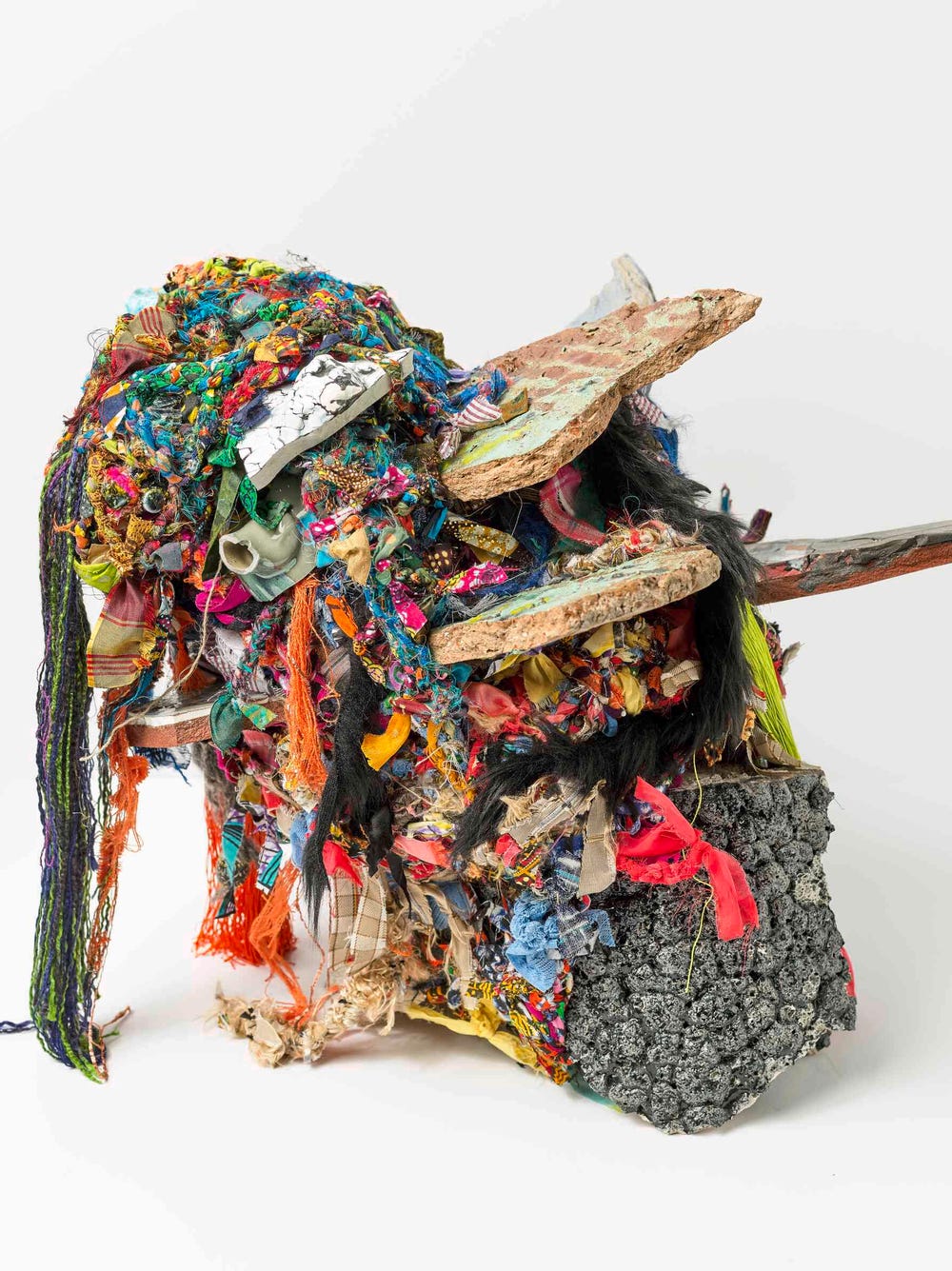The Nature of Nature: Pat Steir’s “Black and White One-Stroke Waterfall”
By Timothy Anglin Burgard
November 6, 2018
Thanks to the Phyllis C. Wattis Fund, the Fine Arts Museums of San Francisco recently acquired Pat Steir’s monumental Black and White One-Stroke Waterfall (1992). One of the most powerful paintings from the artist’s acclaimed Waterfall series, the fourteen-foot vertical canvas (on view as part of Specters of Disruption) creates an immersive viewing experience. The large vertical brushstroke referenced in the painting’s title functions as both a technique and a subject—a descending cascade of liquid churning up spray that conveys the visceral sensation of being at the foot of a towering waterfall, albeit one made of paint.
Pat Steir, Black and White One-Stroke Waterfall, 1992. Oil on canvas, 173 1/2 x 90 3/4 in. Museum purchase, Phyllis C. Wattis Fund for Major Accessions, 2018.30. © Pat Steir / Photo: Randy Dodson
Steir (b. 1940) has been a key figure bridging abstraction and representation for nearly six decades. In her work, materials and gestures merge with the image, so that her paintings are fundamentally about the act of painting itself. Drawing from the minimalist and conceptual art movements and broader cultural trends of postmodernism, she is best known for her poured, splashed, and dripped paintings, which were inspired in part by composer and artist John Cage’s embrace of chance and accident as generative principles. She has described her own technique as “chance with limitations,” in which “gravity becomes my collaborator.”
For me, these paintings are meditations on nature. The nature of paint. The nature of color. The nature of landscape. The nature of a singular gesture.
Steir also has drawn inspiration from the Shan shui (“mountain water”) style of historical Chinese landscape painting that features mountains and waterfalls. From her studies of Taoism and Buddhism, she has absorbed ideas regarding the insignificance of the self within the cosmos, the transient nature of all things, and the futility of the human desire to control outcomes. Describing the multivalent associations of her water paintings, Steir observed: “They are about flow, among other things—waterfalls, rivers and oceans, rainstorms and time—all things that flow and return in other forms. A release. . . . But, you know, the subject is time. Time seems linear, but actually is like a bath, all around us. . . . For me, these paintings are meditations on nature. The nature of paint. The nature of color. The nature of landscape. The nature of a singular gesture. The nature of nature.”
Timothy Anglin Burgard is the Ednah Root Curator-in-Charge of American Art.
